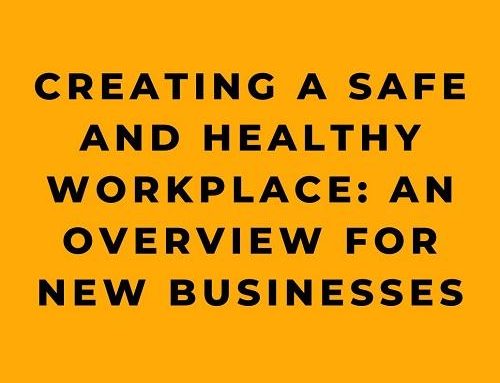The Occupational Safety and Health Administration (OSHA) plays a vital role in ensuring the health and safety of workers across the United States. Since its establishment in 1971, OSHA has worked diligently to reduce workplace hazards and implement standards that protect employees from harm. This article explores the origins and evolution of OSHA, its organizational structure, standards and regulations, training requirements, inspection process, and overall impact on improving workplace safety.
Introduction
The Occupational Safety and Health Administration, commonly referred to as OSHA, is a federal agency housed within the United States Department of Labor. OSHA’s core mission is “to assure safe and healthful working conditions for working men and women by setting and enforcing standards and by providing training, outreach, education and assistance” (OSHA). Established in 1971 following the passage of the Occupational Safety and Health Act, OSHA develops and enforces workplace health and safety regulations across the country. Over the past five decades, the diligent efforts of OSHA have significantly improved working conditions and reduced job-related fatalities, injuries, and illnesses in American workplaces. This article will provide a comprehensive overview of OSHA’s history and organization, standards and regulations, training requirements, inspection and enforcement process, and impact on advancing workplace safety.
History of OSHA
The inception of OSHA stems from widespread public concern over dangerous working conditions across American industries in the 1960s. After numerous failed legislative attempts during the 1960s, the Occupational Safety and Health Act was finally passed in 1970 following a coal mine explosion that killed 78 miners in West Virginia. This tragedy drew further attention to the approximately 14,000 workers who were dying annually from workplace hazards at the time. The Act ushered in a new era in workplace safety oversight at the federal level. OSHA officially began operations in 1971 under the Department of Labor.
In the first two decades after its establishment, OSHA began sets of important regulations covering areas like hazard communication, personal protective equipment, permit-required confined spaces, lockout/tagout procedures, and exposure to bloodborne pathogens. The agency also faced challenges regarding implementation timelines and employer pushback against certain standards. However, over time, OSHA has continually worked to improve its regulations and enforcement methods to better protect employee wellbeing. Today, OSHA protects over 130 million workers across the country as part of its vital, ongoing mission.
OSHA’s Structure and Organization
OSHA operates as part of the United States Department of Labor, overseen by the Assistant Secretary of Labor for Occupational Safety and Health. This Assistant Secretary is appointed by the President of the United States. Under the Occupational Safety and Health Act, each state can choose to run its own occupational safety and health program under OSHA approval or allow OSHA to administer the program for the state. Currently 22 states and territories operate their own plans, while OSHA directly manages programs for the remaining states.
At the federal level, OSHA is divided into different offices and regions. The national office sets policy, creates standards and guidance, and runs national programs. There are also 10 regional offices and 85 area offices throughout the country that handle direct field operations. This includes spearheading training, outreach, education, compliance assistance, and enforcement activities. OSHA employs over 2,100 inspectors, technical support personnel, and compliance assistance specialists. It also relies on partnerships with organizations like the National Institute for Occupational Safety and Health (NIOSH) for research and recommendations.
OSHA Standards and Regulations
OSHA oversees the development and enforcement of occupational safety and health standards that apply to private and public sector workplaces across the United States. Standards are designed to protect workers from various hazards and unsafe conditions that can lead to injury, illness, or death. There are four major categories:
- General industry standards cover hazards like exposure to toxic chemicals, dangerous machinery, fall risks, and other adverse conditions across manufacturing, construction, and service industries.
- Construction industry standards focus on risks specific to construction work like asbestos, lead, confined spaces, electrical hazards, and fall protection.
- Maritime standards apply to shipyard, marine terminal, and longshoring operations.
- Agriculture standards address hazards faced by agricultural operations.
Beyond mandatory safety and health standards, OSHA provides recommended best practice guidance on a range of topics from infectious disease preparedness to workplace violence prevention. Examples of critical OSHA standards include: hazard communication, personal protective equipment, respiratory protection, confined space entry, emergency action plans, and control of hazardous energy sources. Employers must comply with standards based on their industry and specific workplace hazards present.
Training Requirements and Resources
A key part of OSHA’s mission is promoting training and education to improve workplace safety culture across industries. While certain amount and types of training are required by OSHA standards, the agency also provides training guides, materials, grants, and assistance to help employers enhance worker knowledge. Examples of mandatory OSHA training requirements include:
- Hazard communication training for employees exposed to hazardous chemicals.
- Respirator training and medical evaluations for employees required to wear respirators.
- Fall protection, electrical safety, and confined space entry training in construction.
- Workplace violence prevention training for healthcare and social service workers.
OSHA provides extensive training resources through its OSHA Training Institute and OSHA Education Centers to aid employers in meeting requirements. Grants are also available for nonprofit organizations to deliver occupational safety and health training to workers.
Utilizing these training resources can help employers instill a culture of safety and ensure employees have the knowledge to protect themselves on the job.
OSHA Inspections and Enforcement
OSHA inspectors have the right to enter workplaces without advance notice to examine hazards, interview employees, review records, and conduct tests. Inspections can occur due to:
- Fatalities, catastrophes, or serious incidents.
- Worker complaints alleging hazards or violations.
- Referrals from other government agencies.
- Targeted inspections for high-hazard industries.
- Follow-up checks on past violations.
If violations are found, OSHA has the authority to issue citations and monetary penalties. The maximum penalty for serious violations has increased to $15,625 per violation, while willful or repeat violations can warrant fines up to $156,259 per violation. Employers are given abatement deadlines and may be re-inspected. Cases with egregious, willful violations may be criminally prosecuted. OSHA also reaches settlement agreements with employers to correct hazards without citations. Employers can contest citations if they believe they are invalid. Engaging with OSHA transparently and taking corrective actions tends to improve outcomes when violations occur
OSHA’s Impact on Workplace Safety and Health
The long-term effects of OSHA’s standards enforcement, training programs, and promotion of safety culture have led to significant improvements in American workplaces over the past five decades. In 1970, an estimated 14,000 workers died on the job annually. Today, that number has dropped to around 4,700 a year despite the workforce more than doubling in size. Occupational injury and illness rates have also sharply declined – since 1973, occupational injury and illness incidence rates have decreased by 67%.
While challenges still remain, OSHA continues to evolve and leverage partnerships, technologies, and modern research to further control hazards and reduce safety risks. The agency actively identifies new health risks like infectious diseases, excessive heat, and workplace violence to develop appropriate standards and guidance. OSHA’s ongoing efforts contribute to long-term improvements in working conditions and wellbeing for employees across diverse industries. As the nature of work changes, OSHA maintains its critical mission and progress toward safe and healthy workplaces.
Conclusion
The Occupational Safety and Health Administration (OSHA) stands as a beacon of worker protection and safety in the United States. Since its establishment in 1971, OSHA’s tireless efforts have yielded significant reductions in workplace fatalities, injuries, and illnesses. Its rigorous standards, proactive training initiatives, diligent inspection process, and adaptive responses to new challenges underscore its commitment to safeguarding the American workforce. However, the evolving landscape of industry and emerging hazards constantly remind us that OSHA’s mission is far from complete. As the workplace continues to change, OSHA’s role in driving safety culture, enforcing compliance, and fostering innovation in occupational safety remains vital. The next fifty years will likely see OSHA continue to evolve, adapting to new technologies and challenges, always with the core mission of protecting the working men and women of America. The history, structure, standards, and impact of OSHA outlined in this article showcase an agency dedicated to continuous improvement and the wellbeing of employees across the nation. The legacy of OSHA is not only found in the regulations and guidelines it has implemented but in the countless lives saved and injuries prevented through its relentless pursuit of a safe and healthful working environment.
Sources:
- OSHA Official Website: OSHA Official Website
- OSHA at 50: OSHA at 50
- OSHA Law and Regulations: OSHA Law and Regulations
- About OSHA: About OSHA
- A Brief History of OSHA and Workplace Safety: A Brief History of OSHA and Workplace Safety
- What is the Occupational Safety and Health Administration (OSHA)?: What is the Occupational Safety and Health Administration (OSHA)?
- A Short History of Occupational Safety and Health in the United States: A Short History of Occupational Safety and Health in the United States
- Occupational Safety and Health Administration – Wikipedia: Occupational Safety and Health Administration – Wikipedia
- https://arlweb.msha.gov/solicitor/coalact/69hous.htm










